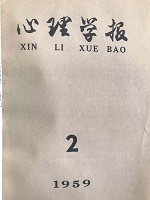|
|
STUDIES ON CERTAIN RULES OF ABBREVIATIONS AND VARIATIONS IN THE PROJECT OF ROMANIZING CHINESE SPELLING SYSTEM
LU CHUNG-HENG AND MA LI-YING (Institute of Psychology, Academia Sinica)
1959, 3 (2):
55-64.
Thepresent study is to investigate into the project of romanzing Chinese. Suggestions are made for revising some of those rules formulated therein.The authors conducted a research in the farmers' spelling class of Ting Hsien and discovered mistakes made on certain spelling rules of the project by 70 % to 90 % of the class. Two thirds of teachers'likewise made the same mistakes. An analysis of examination papers of 548 grade-school teachers, night-school teachers and members in the spelling class for training illiteracy-eliminating cadres, also revealed that about 30 % of this group made mistakes on these same rules. Thus, the authors were certain that the reason for making these mistakes was because of these rules being difficult for the pupils to understand.The authors proposed that these rules be revised accordingly:1. To cancel the abbreviated forms iu, ui, and un of multiple Vowels iou, uei, and uen. Actually, in tihs case the vowels o and e are weakened, but not disappeared.2. To retain the umlaut "..", on the top of u that follows j, q, and x, in order to avoid mechanical memorization of many rules on the part of pupils.3. To remove the rule of changing i into y and u into w. Instead, the use of a sound-separator, " ," is sufficient.
Related Articles |
Metrics
|




